To an industry looking for anticoccidial alternatives, Amlan International offers Phylox® (available in select international markets), a blend of natural ingredients, Phylox was developed to control coccidiosis without resorting to ionophores or chemicals. Dr. San Ching, a Technical Research Manager at Amlan International was instrumental in the development of Phylox. He had this to say about the development of Amlan’s new product to fight coccidiosis
“We designed, Varium®, which provides excellent results reducing the damage from necrotic enteritis caused by toxins produced by Clostridium perfringens. However, our customers also needed a solution for coccidiosis, which is highly related to necrotic enteritis. Therefore, we developed, Phylox, which works to decrease the effects of the parasitic disease. When we started working on a coccidiosis solution, we soon realized that there was a resistance issue in many of the current alternatives, both for antibiotic ionophores and chemicals. Thus, for Phylox we used natural ingredients that would attack coccidia and the coccidiosis problem in more than one way and avoid the development of resistance. We know that the oocysts’ lifecycle is complicated, but most of it occurs in the gut. We selected ingredients that limit the development of the Eimeria oocysts in multiple ways. Additionally, we wanted to invent a product that can work seamlessly with the vaccines.”
Phylox has been shown to be successful in numerous research trials. In 2022, Amlan gave two presentations: A Novel Approach to Coccidiosis Control and A Research-Backed Alternative to Anticoccidial Drugs at the Scientific Forum of IPPE. These presentations represented seven experiments and show Phylox improved growth and immune function in broilers challenged with coccidia. Two additional experiments have been added as a final step in research and development, further proving the value of Phylox for birds facing a coccidia challenge.
In each of the two studies, the coccidia challenge was at day 14 when birds were given an oral dose of 100,000 oocysts of E. acervulina, 50,000 oocysts of E. maxima, and 75,000 oocysts of E. tenella. The coccidia lifecycle is interesting and complex. Many coccidia species are host specific and do not cross from one host species to another. Several strains of coccidia affect chickens. These strains rise and fall in prominence, in part due to their ability to develop resistance to the chemical or antibiotic that is being used to control them. The three species used in these studies attach to different areas of the gastro-intestinal tract. E. acervuline causes lesions and damage to the upper third of the intestine – the duodenum and upper ileum, E. maxima causes lesions in the middle third of the intestine, and E. tenella cause lesions in the ceca.
In the first study, no coccidiosis vaccines or other coccidiosis medications were given. The treatments in the study consisted of both challenged and unchallenged birds with Phylox in the feed and challenged and unchallenged birds without Phylox in the feed. When a coccidia challenge wasn’t given, birds fed Phylox had the same gain and feed conversion as the control birds both for day 14 – 28 and the overall, day 0 – 28, experimental period (Figures 1 &2). This result proves that feeding Phylox doesn’t have a negative affect when a coccidia challenge isn’t present, which is a problem with some other coccidiosis preventatives.
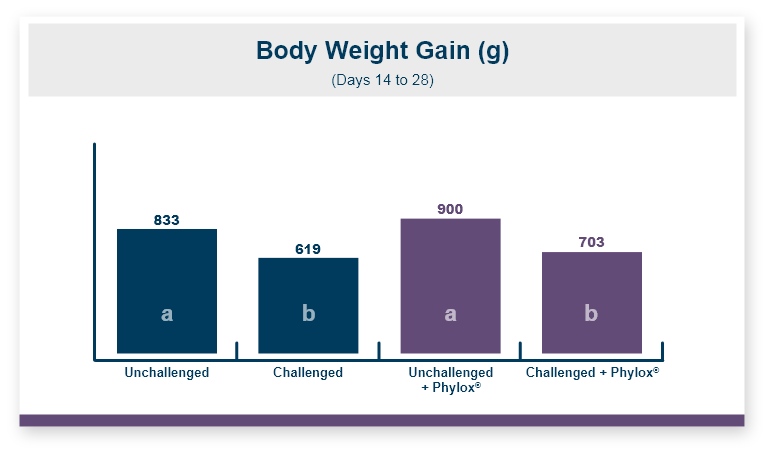
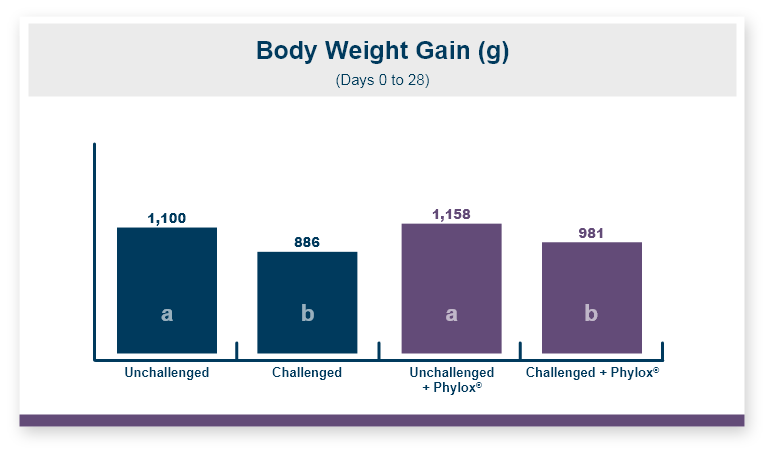
Figure 1. Weight gain of birds without and with a coccidia challenge with and without Phylox in the feed.
Phylox improved performance in birds challenged with coccidia. Feeding Phylox improved feed conversion in the challenged birds. This was seen in both in the challenge period, day 14 – 28, and for the overall experimental period from day 0 – 28.
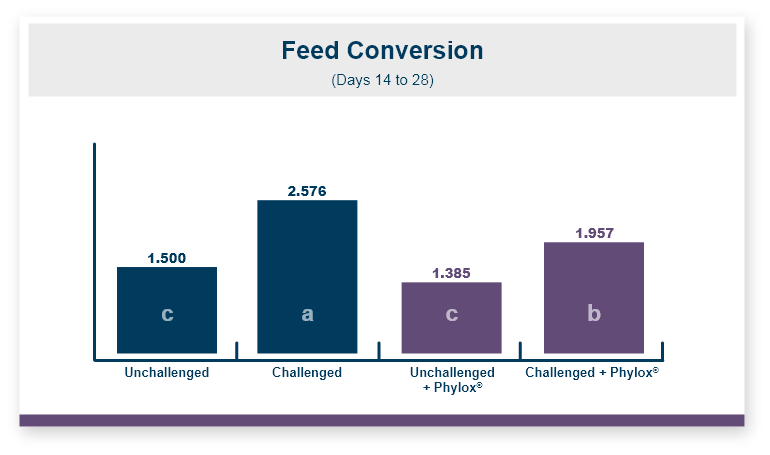
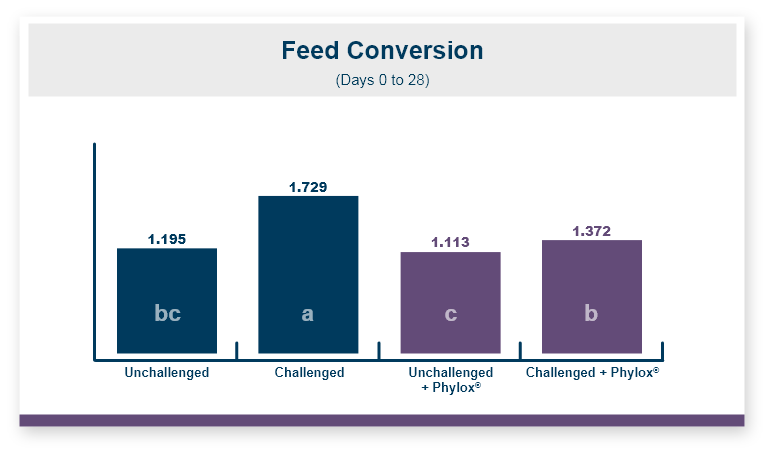
Figure 2. Feed conversion of birds without and with a coccidia challenge with and without Phylox.
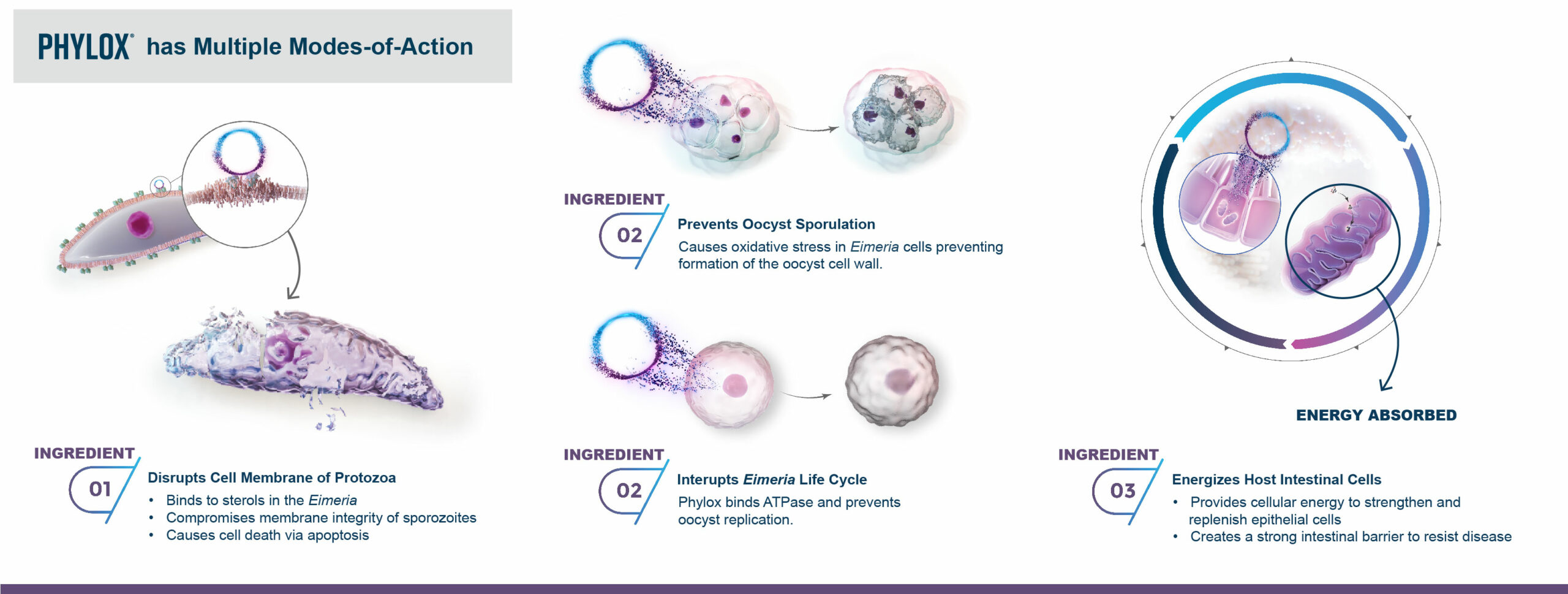
Figure 3. Phylox has multiple ways to help prevent coccidiosis.
The improvement in feed conversion is because Phylox contains various active ingredients giving it multiple modes of action (Figure 3). This allows Phylox to protect the intestine during a coccidia challenge. First, it interferes with the cell membrane of the coccidia protozoa. Phylox binds to the sterols of the cell membrane, compromising the integrity of the sporozoite cell wall, the cell then dies by apoptosis. Phylox also interrupts the Eimeria lifecycle by preventing oocyst sporulation. By interrupting this step, the oocysts don’t develop from the immature noninfective form to the mature infective form. This disruption protects the intestinal cells from coccidial infection. Other ingredients included in Phylox provide energy to the endothelial cells that line the intestine. The protected intestine is better able to absorb necessary nutrients resulting in improved feed conversion. In addition to improved feed conversion, this protective ability is also shown by the decrease in lesion scores of the challenged birds fed Phylox. The lesion scores formed by each of the coccidia species used in the challenged decreased when birds were fed Phylox when intestines were examined on day 20 (Figure 4).
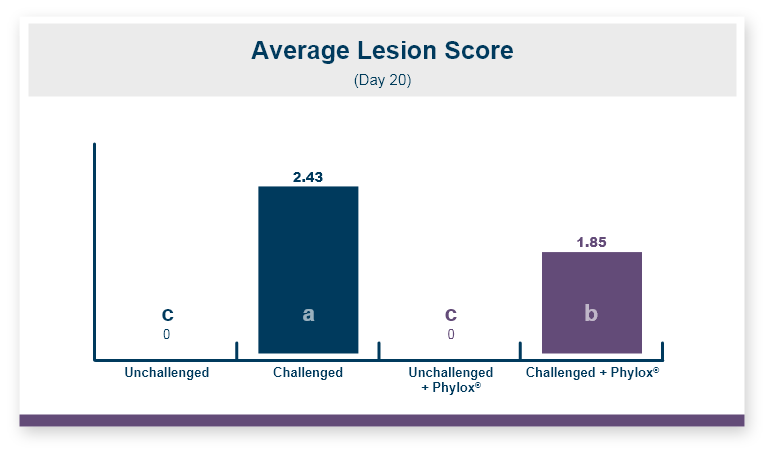
Figure 4. Lesion scores of birds without and with a coccidia challenge with and without Phylox in the feed.
In an experiment with a similar coccidiosis challenge model, Phylox was compared to using salinomycin or nicarbazin. These feed additives have commonly been used to decrease the effects of coccidiosis.

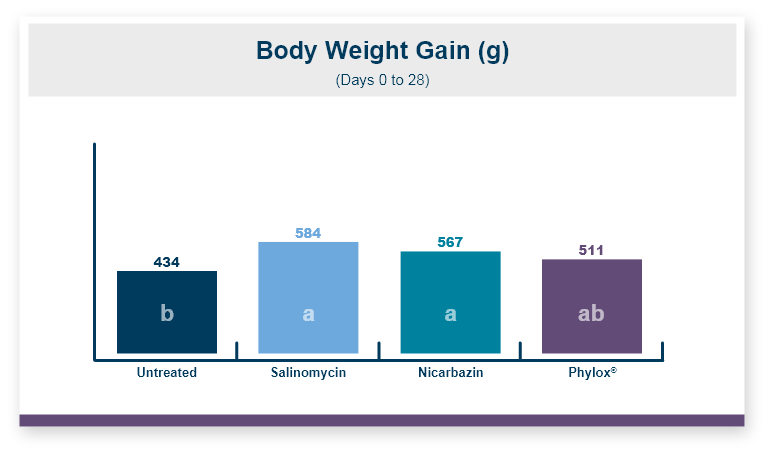
Figure 5. Weight gain of coccidia challenged broilers fed salinomycin, nicarbazin, or Phylox.
Feeding Phylox resulted in weight gain and feed conversion equal to the salinomycin or nicarbazin treatments (Figure 5 & 6). This is the same result that was seen in the research presented by Dr. Ching at the 2022 IPPE Scientific Forum A Research-Backed Alternative to Anticoccidial Drugs. This result was observed both in the days following the challenge (day 14 – 28), and for the overall experimental period (day 0 – 28). All treatments had better feed conversion than the untreated birds.


Figure 6. Feed conversion of coccidia challenged broilers fed salinomycin, nicarbazin, or Phylox.
Phylox reduced lesion scores for each species of coccidia and as an average of all species compared to the untreated challenge when intestines were examined on day 20. The reduction was equal to that of the ionophore and the chemical coccidiosis treatments. Feeding Phylox also decreased fecal coccidia oocysts counts equal to the decrease seen by feeding salinomycin or nicarbazin. Oocysts were counted in excreta collected from day 19 – 22.

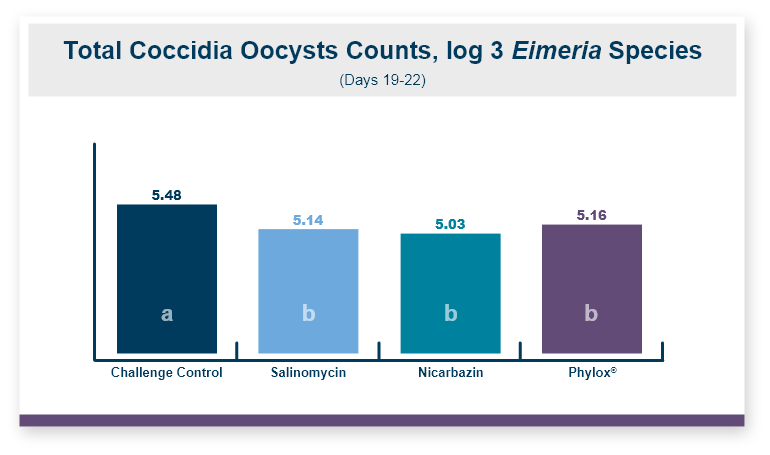
Figure 7. Lesion score or oocyst counts of coccidia challenged broilers fed salinomycin, nicarbazin, or Phylox.
Because Phylox contains various active ingredients it can fill in the gaps that are missing from other coccidiosis control methods. It can be used in No-Antibiotic-Ever programs with no withdrawal requirement. It is effective against multiple Eimeria strains without promoting the emergence of drug-resistant coccidia. And it can be fed with anticoccidial vaccines, preventing disease breakthrough while immunity is being developed by the bird.
Natural Phylox is not only equal to traditional ways of controlling coccidiosis but is equal in economic performance. Phylox can be used to combat coccidiosis in no-antibiotics-ever or traditional production.
Dr. Ching’s presentation of this research at IPPE in the poster session.
Talk to your Amlan representative on how to use Phylox in your production system.

